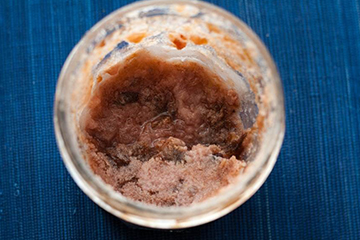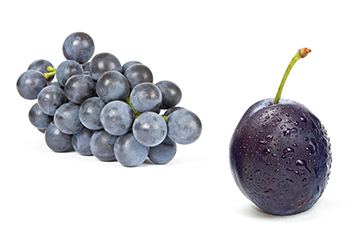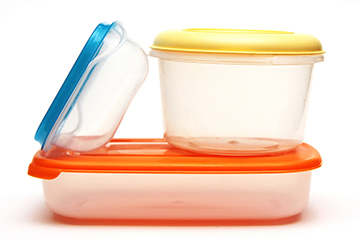
How to Prevent Jam or Jelly From Crystallizing
 Image used with permission from http://www.dirtylaundrykitchen.com/.
Image used with permission from http://www.dirtylaundrykitchen.com/.
It can happen to anyone … you make a great-tasting sweet spread and later find it has developed hard clumps of sugar. Sugar molecules, even when dissolved in liquid, as they are in sweet spreads, like to form into groups — or crystals. Consider the following tips to prevent crystallization from ruining your hard work.
- Temperature and timing are crucial. Add the sugar slowly (while stirring) to a mixture that’s warm but not too hot, and especially not boiling. You do not want to dump a bunch of sugar into a boiling pot. You want to incorporate the sugar by stirring well, until you can tell that all the sugar granules have dissolved. You can tell it is dissolved when you no longer can feel any sugar at the bottom of the pan as you stir it.
- Measure sugar carefully. Use a scientifically tested recipe and measure the sugar accurately.
- Keep the sides of the saucepan clear of crystals. Once the cooking process has started, make sure to keep the sides of the saucepan free of sugar crystals by carefully scraping them away. If you do have undissolved grains of sugar on the saucepan’s sides, they can be “washed” into the sweet spread when you are ladling it into the jars .
- Avoid cooking your mixture too slowly or for too long. Cook the sweet spread at a boil and stir frequently. Remove it from the heat immediately when the gel point has been reached. Also, don’t be tempted to double or triple batches — this lengthens the cooking process and creates crystals.
- Grape juice provides a challenge. Extract the grape juice and allow the tartrate crystals that naturally occur in grape juice to settle by refrigerating the juice overnight. Strain the juice before making sweet spreads.
Grape-plum jelly with pectin
Ingredients:
- 3½ pounds ripe plums
- 3 pounds ripe Concord grapes
- 1 cup water
- ½ teaspoon butter or margarine (optional ingredient to reduce foaming)
- 8½ cups sugar
- 1 box (1¾ ounces) powdered pectin
Yield: About 10 half pints
Instructions:
- Wash and pit plums; do not peel.
- Thoroughly crush plums and grapes, one layer at a time, in a large saucepan.
- Add water. Bring to a boil. Cover and simmer 10 minutes.
- Strain juice through a jelly bag or a double layer of cheesecloth.
- Measure sugar and set aside.
- Combine 6½ cups of juice with the pectin in a large saucepan. Add butter if desired.
- Bring to a hard boil over high heat, stirring constantly.
- Add the sugar and return to a full, rolling boil. Boil hard for 1 minute, stirring constantly.
- Remove from heat, and quickly skim off foam and pour into sterilized half-pint jars.
- Leave ¼ inch of headspace. Adjust lids, process the jars for 5 minutes for elevations up to 1,000 feet and for 10 minutes at elevations of 1,001 feet or higher.
Source: Mills-Gray, Susan. 2019. “How to Can Sweet Spreads.” University of Missouri. Last reviewed May 2019.
Selecting Freezer Containers
Freezing foods is an easy way to extend their shelf life so that you can enjoy them later. However, it is important to use proper packaging materials to keep your food safe and protect its flavor, color, moisture content and nutritive value. Foods should be frozen in containers with a capacity of one-half gallon or less so that the product can freeze rapidly.
For optimum safety and quality, both rigid containers and flexible bags should have the following characteristics:
- Moisture-vapor resistant
- Durable and leakproof
- Will not become brittle and crack at low temperatures
- Resistant to oil, grease or water
- Protect foods from absorption of “off” flavors or odors
- Easy to seal
- Easy to mark
A few other tips to keep in mind when selecting freezer containers:
- The straight sides of rigid containers make the frozen food much easier to get out.
- Regular glass jars break easily at freezer temperatures. Dual-purpose glass jars made for freezing and canning are available.
- Note that cartons in which you purchased cottage cheese, ice cream, milk and so on do not resist moisture vapor well enough for them to be suitable for long-term freezer storage. They are intended for one-time use.
More tips for freezing, as well as directions for freezing various foods, are available at http://nchfp.uga.edu/how/freeze.html.